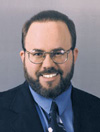Hub Games: When Proof Dies are used to Strike Coins for Circulation
Posted on 6/1/2005

A growing area of interest among variety specialists is the U.S. Mint's striking of coins for circulation from dies that were intended solely for proof coins. By this I don't mean dies that are brilliantly polished in anticipation of coining proofs. Instead, these dies have design features that are distinctive and normally unique to proof coins. At some point in the die preparation process these dies were redirected toward currency strikes, yet their distinctive features readily identify their original purpose.
A popular example of this phenomenon is found in circulating cents of recent issue that have the letters "AM " in AMERICA spaced apart. This feature is typical of proofs, yet a few dates since 1992 have been coined for circulation from such dies, while the great majority of circulating cents have these two letters nearly touching. Dates that have been observed having either the proof or currency reverse include 1992-D, 1998, 1999 and 2000. In all cases except 1992-D, the proof reverse, with widely spaced letters "AM" is more rare.
The question of why the Mint would use proof dies to make coins for circulation leads to the further question of why it would create two distinctive dies in the first place. In actuality, there are many dies involved, and these are generated from hubs. A hub is a positive steel reproduction of the artist's original plasticine model. While the model is sculpted oversize, typically 8-10 inches in diameter, the hub is a mechanical reduction of this model. A tracing pantograph is employed to recreate the contours of the model on a steel die face through the use of a cutting tool that rises and falls in mimicry of the model's design as both model and hub are rotated in synchronization. The result of this cutting operation is called the master hub. It is used to sink a negative master die, which is in turn used to raise many working hubs. From these working hubs are sunk the thousands of working dies needed annually to produce the nation's coinage. Two master hubs are required for each coin type—one for the obverse and one for the reverse.
For many years it was the practice of the U.S. Mint to use single master hubs for the entire lifespan of a coin design, but the enormous mintages of recent decades demands so many dies that single master hubs for the obverse and reverse would simply not last. In addition, the overall relief of our coin designs has been lowered repeatedly during the past 25 years or so, requiring new master hubs each time. This sometimes has led to visible changes from year to year, including the creation of distinctive reverses for the Lincoln Memorial cent. The overlapping use of dies from these distinctive hubs, whether intentional or accidental, has resulted in two collectable varieties for the four issues listed above.
There are other interesting and collectable examples of two distinctive hubs appearing on coins of a single date. One example that comes to mind is the proof half dollar of 1956. The original reverse hub for the Franklin half dollar featured an eagle that was somewhat indistinct, and a new, much sharper hub was introduced early during that year. The so-called "Type 1" proofs are scarcer than the Type 2 coins and command a premium. While all proofs in subsequent years utilized dies taken from the new Type 2 hub, it appears that circulating coins for the next several years were coined with either Type 1 or Type 2 reverse dies. These are Philadelphia Mint coins, and it's likely that the Type 2 pieces were from dies that had been used previously for striking proofs until they became too worn for such quality work.
A similar situation exists for the Washington quarter series. From 1956 through 1964, currency strikes from the Philadelphia Mint are known with either the Type A (also called Type 1) reverse intended for such coins or the Type B (Type 2) reverse normally reserved for proofs. The Type B reverse is easily recognized: Letters "ES" in STATES are separated by a gap, and the overall relief is a bit higher (this is seen most clearly in the bolder motto E PLURIBUS UNUM). Not surprisingly, currency strikes having the Type B reverse are scarce and command a premium among specialists.
A particularly interesting issue is the 1964-D quarter, which likewise may be found with either a Type A or Type B reverse but which exists also with the Type C reverse introduced for the copper-nickel-clad coins of 1965. This new hub exhibits very sharp tailfeathers, a quality lacking in either of the other two reverse hubs. Such a curious situation may be explained by the fact that silver quarters dated 1964-D were being coined simultaneously with the 1965-dated clad quarters during much of 1965. It would be quite easy for a member of the Mint's engraving staff to absent-mindedly apply a mintmark to this die. This is one of my favorite varieties, as a Type C reverse coined in silver is quite startling to the experienced eye.
Stay Informed
Want news like this delivered to your inbox once a month? Subscribe to the free NGC eNewsletter today!
